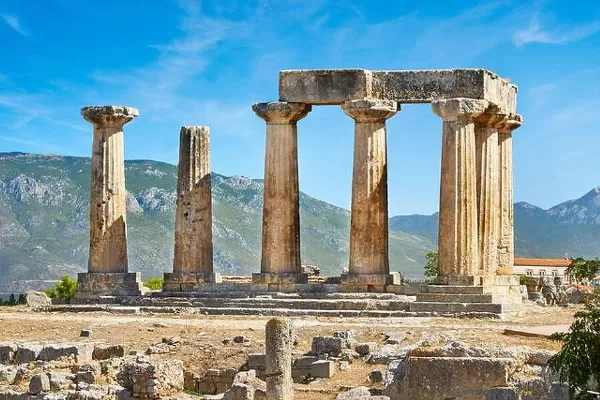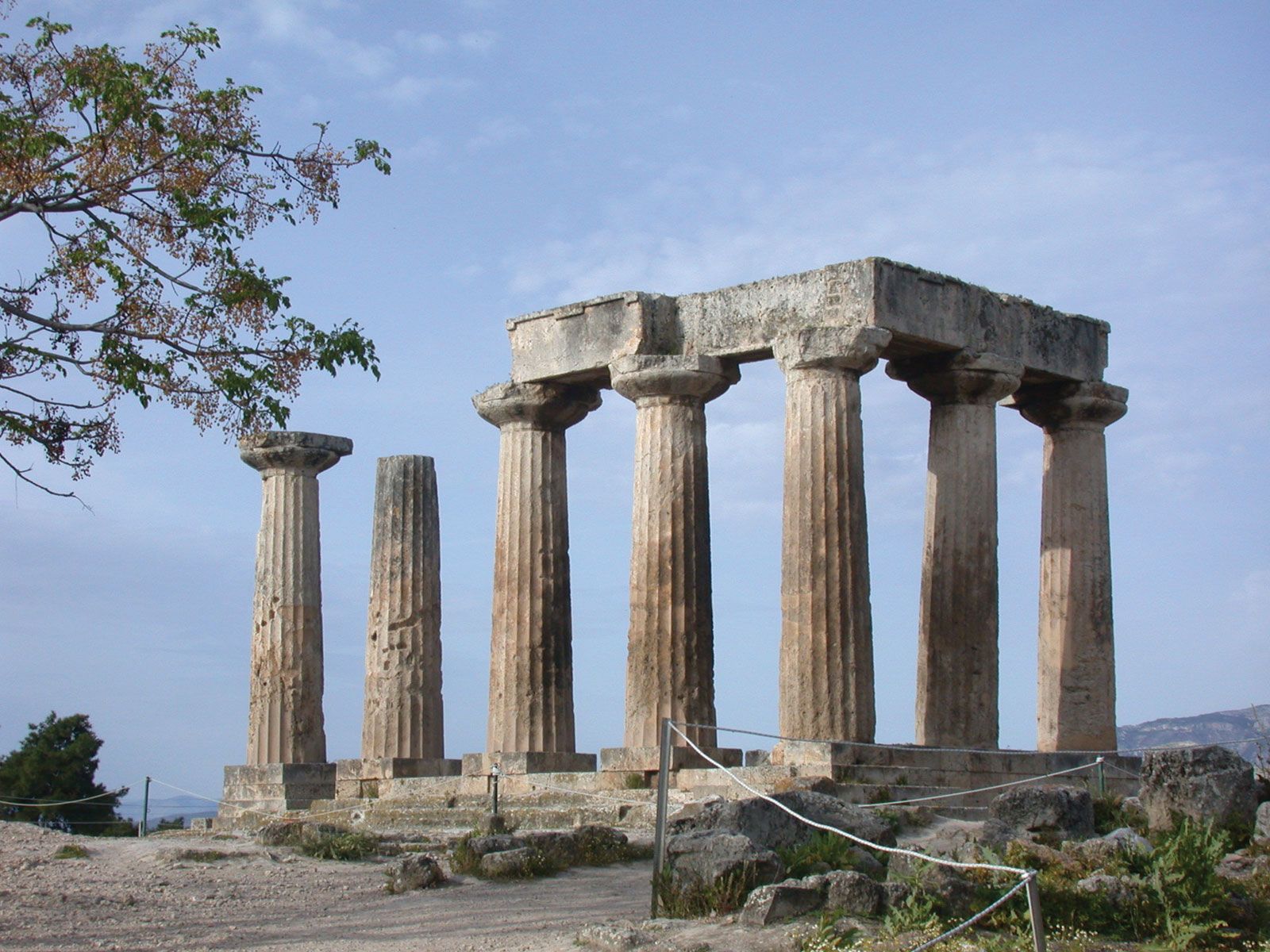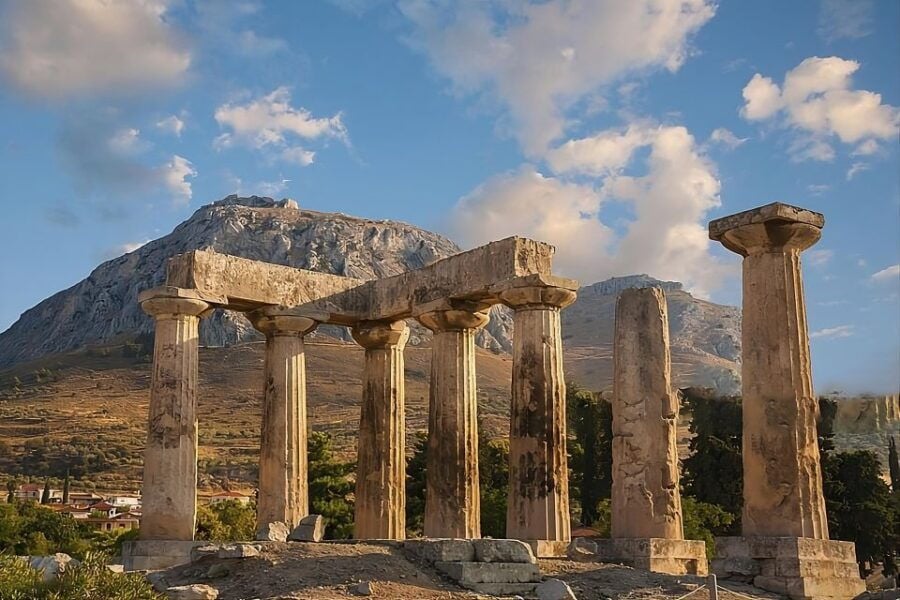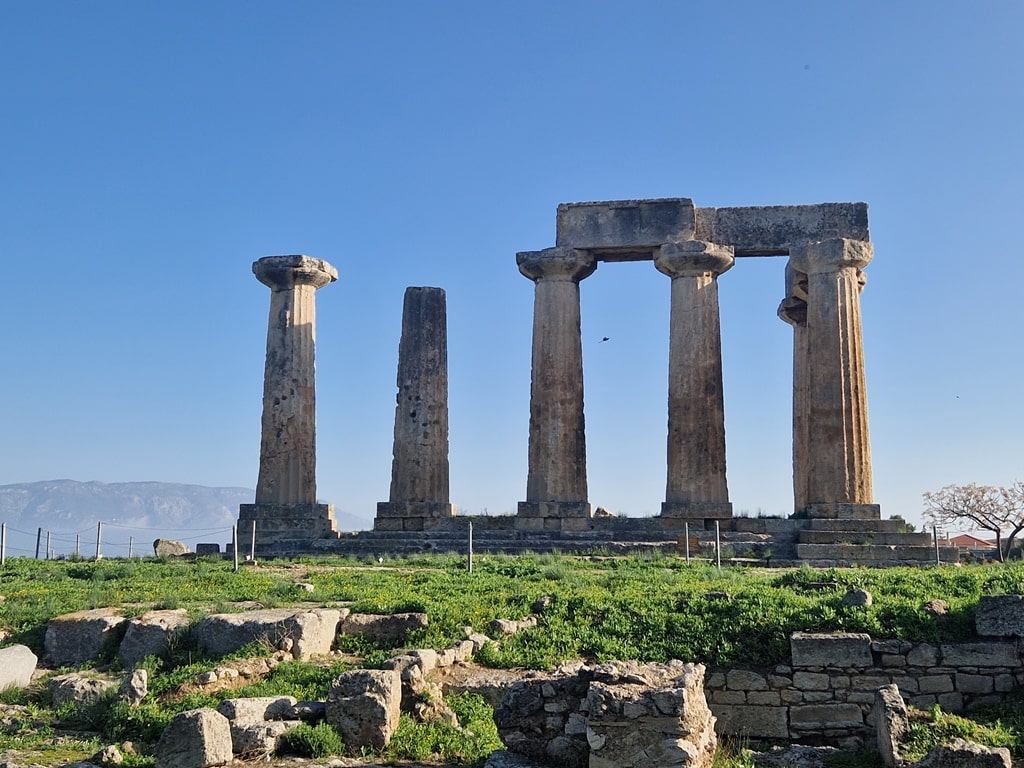The Temple of Apollo in Corinth is one of the most remarkable examples of ancient Greek architecture, showcasing the ingenuity and devotion of early builders. Constructed in the 6th century BCE, this Doric temple stands as a symbol of artistic mastery and cultural significance, offering invaluable insights into the spiritual and architectural traditions of ancient Greece.
Architectural Brilliance
The Temple of Apollo’s design represents a milestone in the evolution of Doric architecture. Its monolithic limestone columns, carved from single stone blocks rather than segmented drums, are a testament to the advanced engineering techniques of the time. Originally featuring 38 columns, seven of these still stand today, radiating the strength and elegance that defined early Greek temples.

The temple’s cella, or inner sanctuary, was a groundbreaking feature, designed to house the cult statue of Apollo. Its layout served as an influential prototype for later masterpieces, including the Parthenon in Athens. The structure’s proportions and minimalistic yet imposing style emphasized harmony and functionality, setting the standard for future Doric designs.
Historical and Religious Importance
Situated in the prosperous city-state of Corinth, the Temple of Apollo reflected the wealth and cultural vibrancy of the region. Corinth’s strategic position on the Isthmus of Corinth made it a major hub for trade and cultural exchange, and the temple was a central symbol of the city’s devotion to Apollo, the god of music, prophecy, and the arts.

The temple was not only a place of worship but also a focal point for festivals and rituals, where citizens sought Apollo’s guidance and blessings. Following the Roman conquest of Corinth in 146 BCE, the temple remained significant, adapting to Roman religious practices and demonstrating the enduring legacy of Greek architectural and cultural influence.
Archaeological Discoveries
Excavations around the temple have revealed numerous artifacts, including statues, inscriptions, and votive offerings. These findings illuminate the religious practices and daily life of ancient Corinthians, providing invaluable context for the site’s historical significance. Many of these discoveries are preserved in the Archaeological Museum of Ancient Corinth, further enriching modern understanding of the temple’s role in Greek society.

Despite the passage of time and the damage caused by natural disasters, the Temple of Apollo continues to inspire awe. Its surviving columns stand as silent witnesses to a civilization that valued harmony, craftsmanship, and devotion.
Apollo’s Cultural Legacy
The influence of the Temple of Apollo extends far beyond its architectural achievements. Apollo, as a deity, represented balance, harmony, and creativity—values deeply embedded in Greek culture. Temples dedicated to him became centers of intellectual and artistic activity, reinforcing his role as a unifying figure in Greek identity.

The Temple of Apollo in Corinth serves as a powerful reminder of how architecture, religion, and culture were intricately linked in ancient Greece. Its design and purpose reflect the broader ideals of a civilization that sought to achieve both spiritual connection and artistic perfection.
Conclusion
The Temple of Apollo in Corinth remains a timeless symbol of ancient Greece’s architectural and cultural achievements. Its enduring legacy highlights the ingenuity and devotion of its builders, while its ruins continue to inspire admiration and curiosity. As both a historical and cultural landmark, the temple offers a profound connection to the values and aspirations of one of history’s greatest civilizations.

